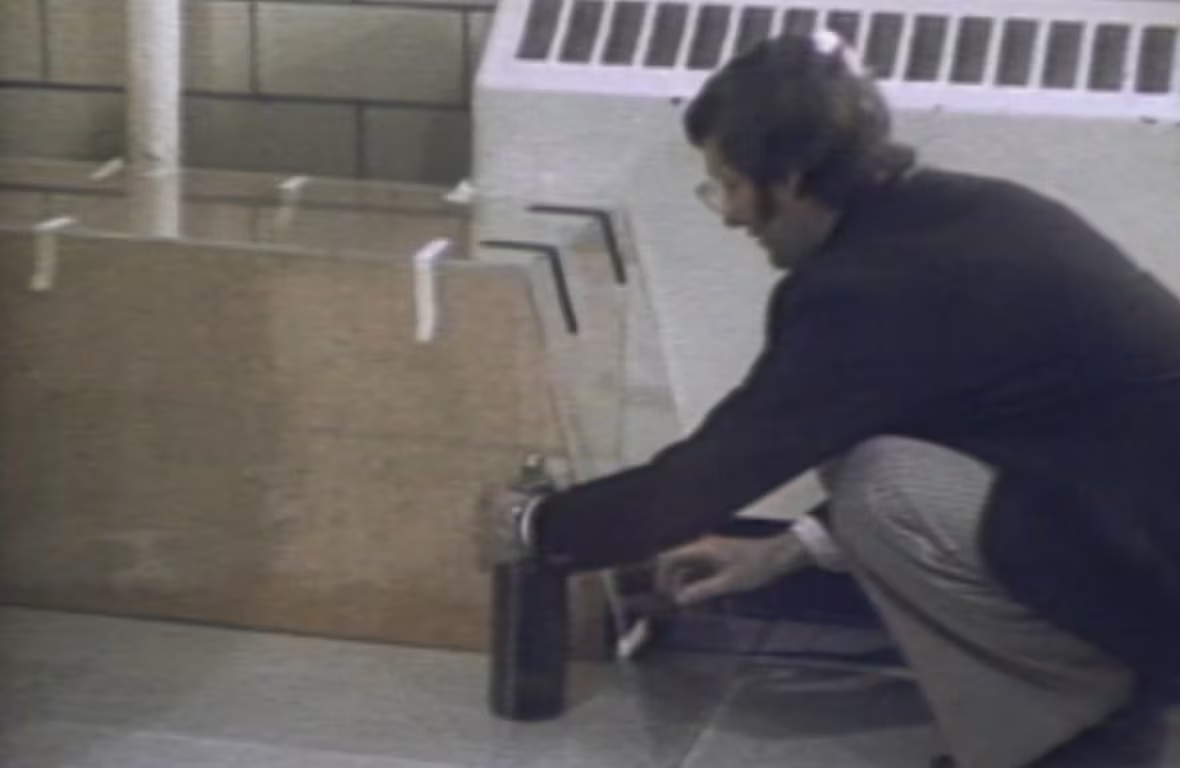The explosive problem of defective pop bottles
Soft drinks could be harmful in 1979, and not because of the sugar
Pouring a soft drink shouldn't be risky, but the bottle containing that Coke or 7-Up could have been a hazard in 1979.

Before plastic bottles came into use, glass was the most common container. And when they tipped over, 1.5-litre glass pop bottles had a nasty tendency not just to break, but to send shards flying.
"I'm going to take the bottle, and ... I'm going to tip it over, just as you might accidentally do at home," said David Barham in a demonstration for CBC's The National.
After putting on safety glasses and placing the bottle in a specially constructed cabinet with transparent walls, Barham asked reporter Joan Watson to back away.
Then, using light pressure with his fingertip, he gingerly pushed over the unlabelled bottle full of brown liquid.
Crash!

"It literally exploded," said Watson. "Sharp fragments were embedded in the one side of the container made of wood."
Barham, a professor at the University of Toronto, said he had conducted the same test on "40 or 50" bottles of different types of pop, and every last one broke.
For good measure, he tried a few more with Watson present.
Brand after brand shattered: Wilson's, 7-Up, Hires root beer, Schweppes (on the second try), and Pepsi.
"One-and-a-half-litre Coke didn't break," noted Watson. "A different shape."
After Barham reported his findings to the federal government's product safety division, they had tested the bottles themselves with much the same result, said Watson.
A meeting was pending to ponder the problem.
"In the meantime," said the reporter, "take care."
Eight days after this report aired, the CBC reported that singer Anne Murray had become the victim of a defective bottle that "went off like a bomb."
"She's now walking on crutches with stitches on one foot," reported Knowlton Nash.
The coating that could help
By the end of the summer of 1979, the bottles had been ordered off grocery shelves and 50,000 cases of them from the Toronto area alone were piled up with nowhere to go.

Nationwide, the returnable bottles and the cases they fit in represented a $46 million investment to the soft drink industry, according to CBC reporter Michael Vaughan.
"Coca-Cola head office is telling its bottlers across the country to complain to their MPs," said Vaughan.
Soft-drink makers were hoping the federal consumer affairs minister, Allan Lawrence, would withdraw the ban.
"But there seems to be an alternative ... to jagged bits of glass flying three metres or more," said Vaughan.
An independent Toronto company had devised a way to make the bottles safer, not by preventing breakage but by mitigating the explosive nature of it.

With a protective coating, a bottle falling off a table would break but not shatter.
But until the manufacturing process could mass-produce the bottles, David Steele, a vice president at Coca-Cola, wasn't interested — even though he agreed it worked in the demonstration he'd seen.
"At this point in time, it's done by hand, with a paintbrush," said Steele. "We need something that's efficient, available, practical and workable. Not something that's still a theory."
The creators of the coating said their product achieved what it aimed to do, and that they would be able to set up a high-volume process in a matter of months.
"It is an experimental program just to demonstrate the fact the we can contain the explosion," said inventor Jack Warrington.


